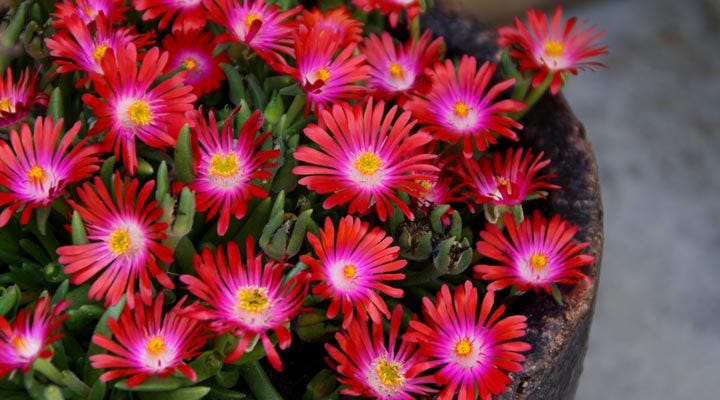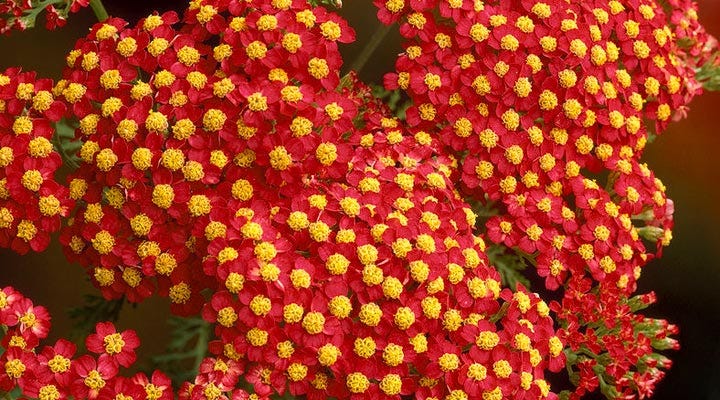High Altitude Gardening Tips
by High Country Gardens
1. Practice Being Patient

As I write this article, the ground is still solidly frozen except for the top two inches that turn to mud at mid-day. I live at about 8500 feet in a narrow valley that doesn't get as much sun as the flatter places. We are in the throes of a spring blizzard that has dumped over two feet of snow in the past week. The moisture is sorely needed, but I'm getting cabin fever and am anxious to get out into the garden. This leads to my first of five important tips: Practice being patient.
Our growing season starts later and ends earlier than our neighbors living down the mountain. Typically, we do our routine shopping at a lower altitude and see bulbs and apricot trees abloom while our gardens are still dormant. It's tempting to want to start gardening, but if you select plants for your zone and plant at the appropriate time for your climate, you'll be more successful. Choosing high elevation plants, such as Delosperma (see above image), will also help ensure success.
2. Know Your Zone
A way to determine your zone is by reviewing the extreme winter low temperatures and see where your climate fits into a hardiness zone. Check with your local Cooperative Extension Service Agents; they'll also tell you the average frost dates for spring and fall. This will give you a general indication of how long your growing season is. If summer nighttime temperatures drop into the 40's on a regular basis, it's not recommended that you try to grow tomatoes, but you can grow many other plants. In fact, some plants grow better at high altitudes because they appreciate the cooler weather.
3. Use Microclimates
Microclimates are those places where it's a little warmer, a little cooler, wetter or drier than the greater part of your landscape. They can be natural or you can make them yourself, and can be as simple as a rocky place that gets all day sun.
I use a lot of stonescaping to create microclimates. Stones absorb heat, moderate the soil temperature, keep the soil moist under the stone, and they create little pockets of shade, especially for roots. A flagstone patio at the southeast corner of my house is my warmest microclimate. Plants start growing there nearly a month earlier than in my perennial beds.
Vegetable gardeners have long used season extenders to have earlier produce and a longer time for harvesting. Some of these techniques can be adapted for ornamental gardens as well, like using cold frames for setting out early starter plants. I also set large plastic milk jugs with the bottom cut out over my little plants to create a warm microclimate for a few days or weeks. Keep the caps off and replace at night if it's forecasted to get really cold. The roots get well established and the plants will be thriving when the weather warms. Another season extender is the floating row cover, a lightweight semi-opaque fabric that is laid on top of the small plants. I usually have a few bamboo sticks close to the plants so the fabric is not directly on tender new leaves.
4. Use Mulch
Mulch is something I use unfailingly. Gravel mulch will warm the soil earlier in the season so it works admirably as a season extender. Prehistoric Native Americans used this technique to grow cotton in zone 5 climates in northern New Mexico. I also use gravel mulch around my cacti and succulents and those perennials that don't like organic mulch. In most of my perennial beds I use a layer of compost as mulch and top it with pine needles. They don't blow off easily and make an attractive topping that slowly decomposes.
5. Select Deer Resistant Plants

If you live in high altitudes, you live with deer and they'll eat anything if they are really hungry. However, if their preferred food is in abundant supply, they'll leave certain plants alone. There are many deer resistant plants, so I try to select from those. If there is a plant you must have that also appeals to deer, use a repellent, such as Deer-Off, or a barrier of some kind.
Gardening at high altitude has its trials but with a little effort you can be rewarded with a garden that is truly spectacular and also different from the gardens of your lower elevation friends.
Text and Photos by David Salman.© All articles are copyrighted by High Country Gardens. Republishing an entire High Country Gardens blog post or article is prohibited without permission. Please feel free to share a short excerpt with a link back to the article on social media websites, such as Facebook and Pinterest.